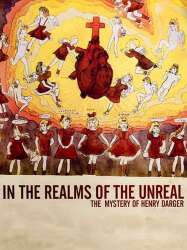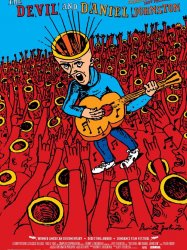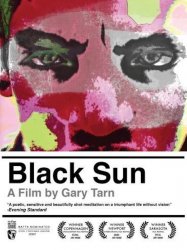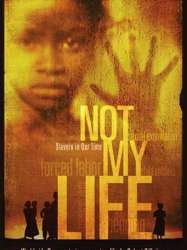Breathing Lessons: The Life and Work of Mark O'Brien is a american film of genre Documentary directed by Jessica Yu released in USA on 1 january 1996
Breathing Lessons: The Life and Work of Mark O'Brien (1996)

If you like this film, let us know!
Released in USA 1 january 1996
Length 35minutes
Directed by Jessica Yu
OriginUSA
Genres Documentary
Rating75%










Breathing Lessons: The Life and Work of Mark O'Brien is a 1996 American short documentary film directed by Jessica Yu. It won an Academy Award at the 69th Academy Awards in 1997 for Documentary Short Subject.
Mark O'Brien was a journalist and poet who lived in Berkeley, California. The documentary explored his spiritual struggle coping with his disability; he had to use an iron lung much of the time due to childhood polio.
Mark died on July 4, 1999, from post-polio syndrome.
^ "The 69th Academy Awards (1997) Nominees and Winners". oscars.org. Retrieved 2011-10-23.
^ "New York Times: Breathing Lessons: The Life and Work of Mark O'Brien". NY Times. Retrieved 2008-05-30.
^ "Mark O'Brien's web site". Mark O'Brien's site. Archived from the original on 19 April 2011.
Trailer of Breathing Lessons: The Life and Work of Mark O'Brien
Bluray, DVD
Streaming / VOD
Comments
Leave comment :
Suggestions of similar film to Breathing Lessons: The Life and Work of Mark O'Brien
There are 3 films with the same director, 8965 with the same cinematographic genres, 3373 films with the same themes (including 167 films with the same 2 themes than Breathing Lessons: The Life and Work of Mark O'Brien), to have finally 70 suggestions of similar films.If you liked Breathing Lessons: The Life and Work of Mark O'Brien, you will probably like those similar films :

In the Realms of the Unreal (2004)
, 1h21Directed by Jessica Yu
Origin USA
Genres Documentary
Themes Documentary films about the visual arts, Documentaire sur une personnalité
Actors Larry Pine, Wally Wingert, Dakota Fanning
Rating72%





 , 1h45
, 1h45Directed by Jon Chu
Origin USA
Genres Documentary, Musical
Themes L'adolescence, Films about children, Medical-themed films, Films about music and musicians, Documentary films about music and musicians, Documentaire sur une personnalité, Musical films, Films about psychiatry, Films about disabilities, Films about autism
Actors Justin Bieber, Usher, Jaden Smith, Miley Cyrus, Snoop Dogg, Ludacris
Rating17%





The film follows the pop star Justin Bieber during 10 days counting down to what is considered his biggest performance, that of August 31, 2010 in Madison Square Garden, which sold out in 22 minutes. It shows footage of the performances during this period from his My World Tour. It shows excited female fans, and several instances of the "One Less Lonely Girl" routine of inviting a girl on stage for him to serenade and give flowers to, and of surprising random girls with free tickets to his concerts. The main people around Bieber, being like family and good friends to him, are interviewed, but Bieber himself is not. Various instances of praying together before a show are shown.

Heavy Load (2008)
, 1h30Origin United-kingdom
Genres Documentary, Musical
Themes Films about music and musicians, Documentary films about music and musicians, Documentaire sur une personnalité, Musical films, Films about disabilities
Rating69%






Fatboy: The Movie (2005)
, 1h9Origin USA
Genres Documentary
Themes Documentaire sur une personnalité, Documentary films about health care, Films about disabilities
Rating72%






Wretches & Jabberers (2011)
, 1h30Origin USA
Genres Comedy, Documentary
Themes Medical-themed films, Documentaire sur une personnalité, Documentary films about health care, Films about psychiatry, Films about disabilities, Films about autism
Rating78%





 , 1h50
, 1h50Directed by Jeff Feuerzeig
Origin USA
Genres Documentary, Musical
Themes Medical-themed films, Films about music and musicians, Documentary films about music and musicians, Documentaire sur une personnalité, Documentary films about health care, Musical films, Films about psychiatry, Films about disabilities
Actors Matt Groening
Rating78%





Portrait de l'Américain Daniel Johnston, artiste maudit, songwriter culte et illustrateur, qui souffre de maniaco-depression.

Life. Support. Music. (2008)
Origin USA
Genres Documentary
Themes Films about music and musicians, Documentary films about music and musicians, Documentaire sur une personnalité, Documentary films about health care, Musical films, Films about disabilities
Actors Norah Jones
Rating71%






Black Sun (2006)
, 1h10Origin USA
Genres Documentary
Themes Documentary films about business, Documentary films about the visual arts, Documentary films about the film industry, Documentaire sur une personnalité, Films about disabilities
Rating71%





Un soir de 1978, Hugues de Montalembert, peintre et réalisateur, est agressé dans son appartement de New York. Alors qu’il se défend, il reçoit du décapant dans les yeux. Quelques heures plus tard, il a perdu la vue pour toujours. Au fil des mois, il se réapproprie son quotidien et commence à voyager, seul, en Indonésie ou en Inde. Un nouveau monde de perceptions s’ouvre alors à lui.

One Goal (2008)
, 26minutesDirected by Sergi Agustí
Origin Espagne
Genres Documentary
Themes Sports films, Documentary films about sports, Association football films, Documentaire sur une personnalité, Films about disabilities
One Goal is an objective, but also a passion. This documentary follows the path towards peace that a group of young amputated men began in Sierra Leone years ago. Through the power of their game they have become an example for their society. From icons of war to icons of peace and hope, they transformed their lives through a shared passion: football.

Not My Life (2011)
, 1h23Directed by Richard Young
Origin USA
Genres Documentary, Crime
Themes Films about children, Films about slavery, Medical-themed films, Films about sexuality, Erotic films, Films about pedophilia, Films about prostitution, Documentary films about law, Documentaire sur une personnalité, Documentary films about prostitution, Documentary films about health care, Documentary films about child abuse, Films about psychiatry, Films about disabilities, Films about child abuse
Actors Glenn Close
Rating77%





Ce film dépeint les pratiques cruelles et déshumanisantes de la traite des êtres humains et de l'esclavage moderne à l'échelle mondiale. Filmé sur cinq continents, dans une douzaine de pays, "Not My Life" emmène le spectateur dans un monde où des millions d'enfants sont exploités via un panel stupéfiant de pratiques, incluant le travail forcé, le tourisme sexuel, l'exploitation sexuelle, et les enfants soldats.
 Connection
Connection